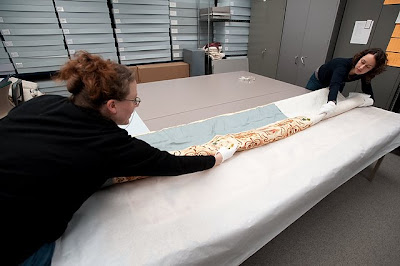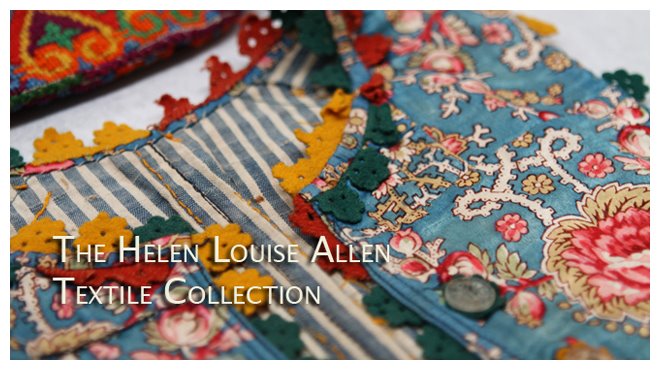 HLATC 1991.22.8
HLATC 1991.22.8How does one store a feather hat? In this case, the hat,
HLATC 1991.22.8, is a 1950s hat from milliner and fashion designer Hattie Carnegie. The feathered brim makes storing the hat especially problematic.
This hat is often chosen by our 3D patternmaking class for analysis of its form and construction. Considering its relatively frequent handling, we wanted to create a storage method that would allow us to pull the hat from its storage cabinet and display it, all without having to actually touch the piece. We museum people love that sort of thing.
Tara Genske was up for this challenge and the hat become her project. Instead of ordering a custom sized box for this piece, she worked a little magic on an existing one. Since the box needed to be extra deep, Tara extended the height of the sides with pieces of archival board.

The next obstacle was what the hat would sit on. It needed to be elevated high enough to keep the feathers from touching anything, but not so high that it was unstable. Using muslin and blocks of ethafoam Tara constructed a hat stand which was attached to a piece of coroplast board cut to the size of the box bottom.

One layer of coroplast board ended up not being sturdy enough for the weight of the piece, so she used two with a another piece of sturdier board sandwiched in the middle. Tara finished off the coroplast platform by threading loops through each side for handles.

Now when the piece needs to be displayed for a class, we simply use the handles to pull the entire tray out of the box, never having to touch the hat. We imagine all those little feathers are thanking us.
























































